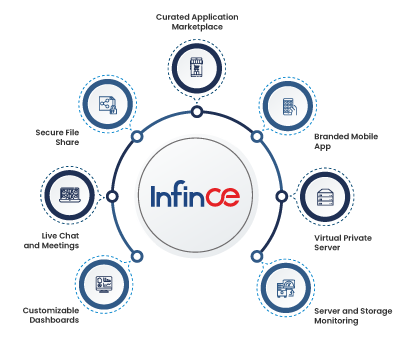How A CRM Helps Drive More Sales For Your Small Business?
“Customer is King” holds true for any business, in spite of what you offer to the market for revenue; be it products or services. But with the immense growth of technology and its salient propagation among businesses, there has been a huge reduction in the gap that existed between large and small businesses when it comes to satisfying customer expectations.
Through innovation and digital transformation, small businesses have been able to penetrate markets that were controlled by heavyweights by disrupting the entire product or service lifecycles. A major factor in enabling this disruption was customer data and this is where Customer Relationship Management (CRM) software makes the difference in building a great experience for customers. From managing sensitive information about customers to help sales folks close deals faster, CRM is a vital tool for today’s growing small businesses.
Related Reading:6 Benefits of Using a Cloud CRM
Here are 5 convincing reasons why small businesses need to invest in a CRM solution today:
1. Identify your Most Suitable C ustomer
Did you know that 79% of all marketing-generated leads never convert into a sale without a CRM behind the entire operation? This happens when you do not identify and nurture the right prospect. In the absence of a CRM, your sales team will not have access to insights garnered by your marketing team about potential areas of interest of the prospect. This will result in the sales team preparing the best pitch for a wrong target and the entire effort goes down in vain without any result. With a CRM in place, the sales team can get accurate insights about customers who are the best suitable for each sales pitch they have created from the business offerings available.
2. Plan on Building Customer Relationships
It is natural for your sales force to run out of ideas or time while meeting, convincing, and converting prospective leads into rewarding deals. With a CRM application, they can build a relationship with the customer meticulously so that every discussion they have is productive and conversion happens faster. By documenting every interaction in a CRM, the salesperson can use insights from the CRM to approach prospects at the right time with the right context and with the right offering to quickly close the discussion.
Insights derived from previous customer interactions can be utilized by all members of the sales team as best practices to follow when they meet a new prospect or when taking over the next stage of discussions with a customer who was brought into the nurturing phase by another salesperson.
3. Drive Better Campaigns
Today’s massively popular digital marketing landscape is one way small businesses can catapult their sales considerably. With a CRM platform, it becomes easier to build a data-driven marketing engine around the platform and make better and smarter campaigns to win customer interest.
A simple example would be using insights from the CRM in an email campaign to boost holiday sales for a small online retail business. The system would give insights such as preferred email reading time, interest and buying patterns of prospects (derived from their past interactions and shopping history also stored in the CRM) and choices in product varieties. These insights can help in closing the sales deal faster with more convincing sales messages and the right timing of email. It may also include targeted promotions such as discounts on special occasions like birthdays or anniversaries. The small analytical input from the CRM can make a big difference in winning the sales conversion.
4. Improve Up-selling and Cross-selling Capabilities
Once a customer’s journey has been recorded in the CRM, it becomes easy for a small business to use the data to run targeted up-selling and cross-selling promotions. This will also help you to build sustainable long term relationships with valued customers by engaging with them periodically. A committed customer is your biggest marketing asset and by creating a culture of continuous sales engagement with intelligent CRM inputs, this commitment is easily achieved.
With the help of CRM, your sales and marketing teams can make better and smarter decisions with
Related Reading: Top 5 Productivity Tools Every Small Business Needs Today
A CRM is a small business’s best buddy for its marketing and customer outreach initiatives. From building a healthy sales pipeline to helping build fabulous experiences through customer feedback about your products and services, it is a one-stop destination to bring more sales revenue for your business. Successful businesses utilize the CRM capabilities of platforms like INFINCE to drive more value from their customer relationships. Get in touch with us to know how INFINCE’s CRM capabilities can be the right choice for your customer relationship management.















